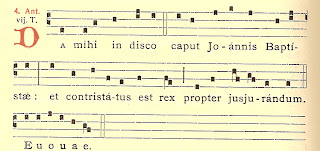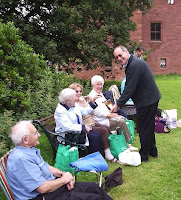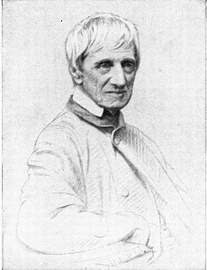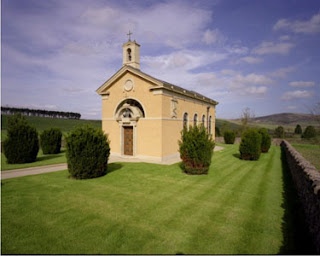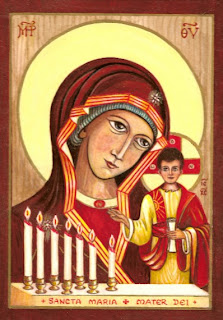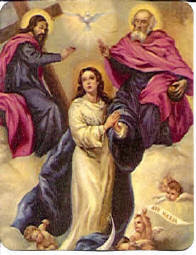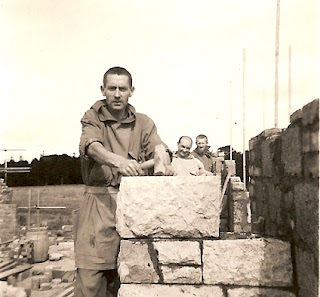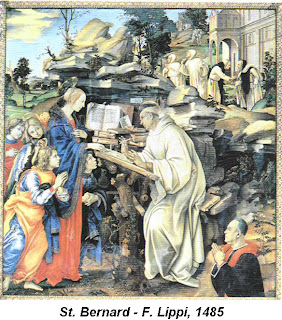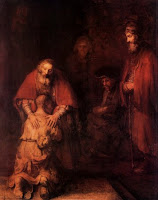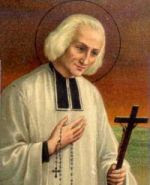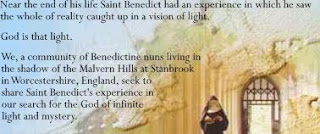Edith Stein St. Teresa Benedicta of the Cross. 9th August
Today we celebrate one of the Patrons of Europe.Charles would like me to find the appropriate Readings for the Mass. There are a number of children attending but during these days the Old Testament Reading from Numbers has some fierce narratives about the Chosen People being penalised by forty years in the desert because the underestimated God. They were frightened off by the reports of their own spies. Caleb is names as one of the spies. Is he not the character introduced by Cecil B deMille in the Ten Commandments played by Edward G Robinson. As the agitator for the Making of the Golden Calf Robinson made the greatest villain in the film.Another question from these OT Readings mentions Moses wife as the Cushite woman. Was her father, Jehro Moses' son in law, not a Midianite?
World English Bible: Miriam and Aaron spoke against Moses because of the Cushite woman whom he had married; for he had married a Cushite woman.
WES: 12:1 Miriam - Miriam seems to be first named, because she was the first mover of the sedition; wherefore she is more eminently punished. The Ethiopian - Either, Zipporah, who is here called an Ethiopian, in the Hebrew a Cushite, because she was a Midianite: the word Cush being generally used in scripture, not for Ethiopia properly so called below Egypt, but for Arabia. If she be meant, probably they did not quarrel with him for marrying her, because that was done long since, but for being swayed by her and her relations, by whom they might think he was persuaded to chose seventy rulers, by which co - partnership in government they thought their authority and reputation diminished. And because they durst not accuse God, they charge Moses, his instrument, as the manner of men is. Or, some other woman, whom he married either whilst Zipporah lived, or rather because she was now dead, though that, as many other things, be not recorded. For, as the quarrel seems to be about his marrying a stranger, it is probable it was a fresh occasion about which they contended. And it was lawful for him as well as any other to marry an Ethiopian or Arabian woman, provided she were, a sincere proselyte.
biblebrowser.com/numbers/12-1.htm
Saint Teresa Benedicta of the Cross (Edith Stein)
Martyr & Co-Patroness of Europe.
August 9: Celebrated as a Feast with Proper Texts.
Edith Stein was born to a Jewish family at Breslau on October 12, 1891. Through her passionate study of philosophy she searched after truth and found it in reading the 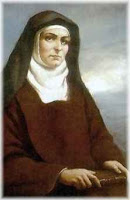 autobiography of St Teresa of Jesus. In 1922 she was baptised a Catholic and in 1933 she entered the Carmel of Cologne where she took the name Teresa Benedicta of the Cross. She was gassed and cremated at Auschwitz on August 9, 1942, during the Nazi persecution and died a martyr for the Christian faith after having offered her holocaust for the people of Israel. A woman of singular intelligence and learning, she left behind a body of writing notable for its doctrinal richness and profound spirituality. She was beatified by Pope John Paul II at Cologne on May 1, 1987, and canonized at Rome twelve years later.
autobiography of St Teresa of Jesus. In 1922 she was baptised a Catholic and in 1933 she entered the Carmel of Cologne where she took the name Teresa Benedicta of the Cross. She was gassed and cremated at Auschwitz on August 9, 1942, during the Nazi persecution and died a martyr for the Christian faith after having offered her holocaust for the people of Israel. A woman of singular intelligence and learning, she left behind a body of writing notable for its doctrinal richness and profound spirituality. She was beatified by Pope John Paul II at Cologne on May 1, 1987, and canonized at Rome twelve years later.
St. Edith Stein
The special readings (below) place St. Teresa Benedicta in the wonderful associations with Jewish heroin Esther, and the relations of Jews and Samaritans in the story of the Woman at the Well.
When I think that my mother was born in the same decade of Edith Stein, 1891, I can only begin to realize the enormity of the events of the 2nd World War to which a happy five-year boy old was oblivious.
Two women of the same time but in very different parts had their lives wrenched apart by that cataclysm of human lives. The story of Edith Stein is also the story of the Holocaust in Nazi Europe. The story of my mother is the story of the upheaval of countless persons and families. From her Jewish background Edith Stein found her path through the intellectual currents of Poland and Germany until she found faith in the Catholic Church and her vocation in he Carmelite Order.
What could my mother and her seven small children have in common with this woman, convert Jew, philosopher, contemplative nun, victim of the Holocaust? It has taken these 73 years for me to understand and appreciate in some way the lasting scar on Europe.
All unaware of joining the millions of people who suffered displacement 1939-1946 our family was evacuated from Glasgow to a Catholic town-land in County Donegal. There we remained for the duration of the War. As children we had little or no knowledge of the war or of the world in general. Father was far away at work in the war effort. But for the mother of seven young children it certainly was evacuation and displacement, and the disruption of everything she might have anticipated as wife and mother.
For St. Teresa Benedicta of the Cross, Edith Stein, to be declared Patroness of Europe places each us in our own niche of that terrible time. By time and reflection we grow in the dimension of a Europe seen with the eyes of faith.
The Seven Brothers killed in our monastery of Atlas, Algeria, (http://www.ocso.org/ ), used to hear the Superior, Fr. Christian, speak of the Martyrdom of the Humdrum, the routine life of the monks. It is a very valid kind of martyrdom, whether of the religious life or of the wife and mother. For some it applies to both forms of martyrdom. It applied to the monks beheaded in Algeria. It applied to Sr. Teresa Benedicta of the Cross (Edith Stein) in her Carmelite monastery, in Auschwitz concentration camp.
The rounding up of Jews and Religious in Belgium and Holland destined for the gas chambers was in retaliation to the Catholic Bishops’ protests against the Nazi regime.
The secret of Martyrs and Saints is their total loving and praising God to their heart’s content.
That phrase, ‘doing something to one’s heart content’ is not heard so often in our society, but it speaks of an inner joy in loving God.
The Löb family
http://www.koningshoeven.nl
The war years 1940-1945 also affected the monastery of Tilburg, Holland. Besides the 'usual inconveniences', three 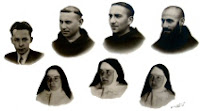 brothers from the community as well as three sisters from Koningsoord, all members of the same family, were picked up by the Nazi's on August 2, 1942, because they were Jewish, and were transported via Westerbork to Auschwitz. (See Link for the tragic story in the Tilburg Website).
brothers from the community as well as three sisters from Koningsoord, all members of the same family, were picked up by the Nazi's on August 2, 1942, because they were Jewish, and were transported via Westerbork to Auschwitz. (See Link for the tragic story in the Tilburg Website).
We are not bystanders viewing the Martyrs & Saints. It is misleading to see in the Canonized Saints only the political profile of counter witness to the world, as if that were the only criterion of holiness. Pope Leo had it right when he saw the “fire within the fire’ in the great love for Jesus in the hearts of the faithful.. While St. Laurence, for example, was enveloped in the flames, the fire of love of the faithful soul envelopes that blaze by the greater fire of divine love. Standing apart from the physical or mental torture of the body, the secret of inner love for Jesus keeps the saint, canonized hero or simple baptized faithful, free and at one with the love of God – “loving God to the hearts content”.
Prayer
Lord, God of our fathers,you brought Saint Teresa Benedictato the fullness of the science of the crossat the hour of her martyrdom.Fill us with that same knowledge;and, through her intercession,allow us always to seek after you, the supreme truth,and to remain faithful until death to the covenant of loveratified in the blood of your Sonfor the salvation of all men and women.We ask this through Christ, our Lord.
Scripture Reading: Book of Esther
Esther 4C:12-16, 23, 25 (or 4:3-5, 12, 14);
Est 4:3 And in every province, no sooner had the royal command and edict arrived, than among the Jews there was great mourning, fasting, weeping and wailing, and many lay on sackcloth and ashes.Est 4:4 When Queen Esther's maids and officers came and told her, she was overcome with grief. She sent clothes for Mordecai to put on instead of his sackcloth, but he refused them.Est 4:5 Esther then summoned Hathach, an officer whom the king had appointed to wait on her, and ordered him to go to Mordecai and enquire what the matter was and why he was acting in this way.Est 4:12 These words of Esther were reported to Mordecai,Est 4:14 No; if you persist in remaining silent at such a time, relief and deliverance will come to the Jews from another quarter, but both you and your father's whole family will perish. Who knows? Perhaps you have come to the throne for just such a time as this.'
Gospel - John 4:19-24.
Joh 4:19 'I see you are a prophet, sir,' said the woman.Joh 4:20 'Our fathers worshipped on this mountain, though you say that Jerusalem is the place where one ought to worship.'Joh 4:21 Jesus said: Believe me, woman, the hour is coming when you will worship the Father neither on this mountain nor in Jerusalem.Joh 4:22 You worship what you do not know; we worship what we do know; for salvation comes from the Jews.Joh 4:23 But the hour is coming -- indeed is already here -- when true worshippers will worship the Father in spirit and truth: that is the kind of worshipper the Father seeks.Joh 4:24 God is spirit, and those who worship must worship in spirit and truth.
